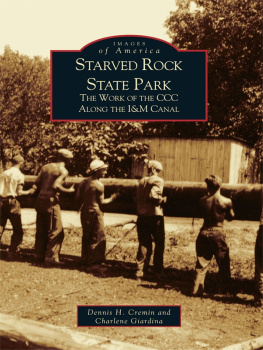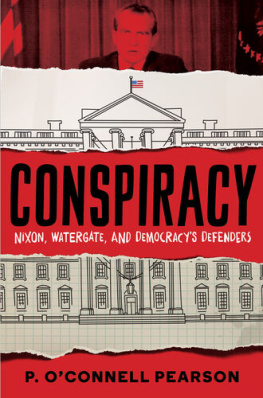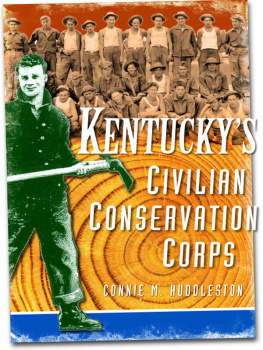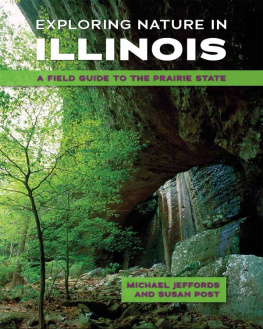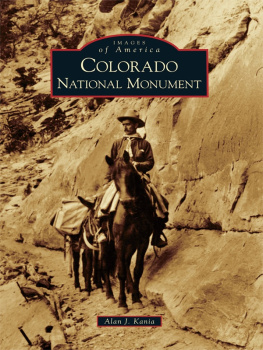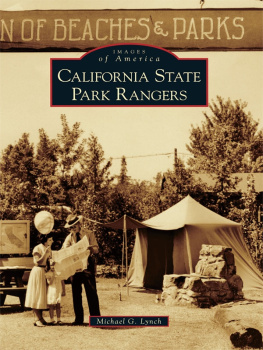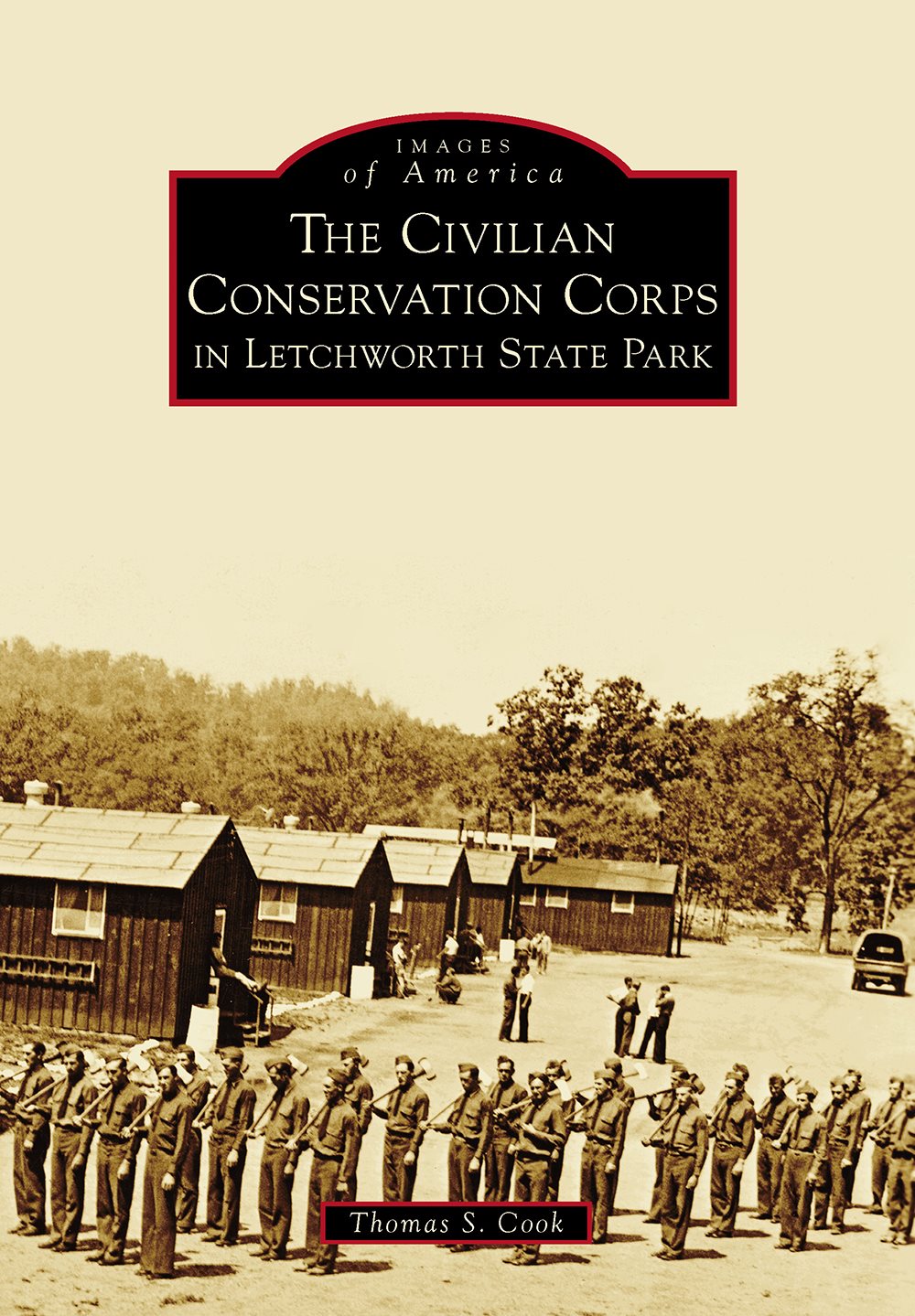
IMAGES
of America
THE CIVILIAN
CONSERVATION CORPS
IN LETCHWORTH STATE PARK

Members of the Civilian Conservation Corps (CCC) Big Bend Camp 23 ride on a float they constructed for a parade in Warsaw, New York. The floats signs say Camp 23 Brings You A Park and CCC Camps Build Men. These two important goals of Pres. Franklin D. Roosevelts Depression-era program were accomplished by the four camps that operated in Letchworth Park between 1933 and 1941. (Nunda Historical Society.)
ON THE COVER: Members of President Roosevelts Tree Army practice marching behind their barracks at Big Bend Camp in Letchworth State Park. They carry axes, not guns, but their military-like determination, discipline, courage, and hard work resulted in the rapid development of the park and the creation of a generation of men whose motto was We can take it! (Letchworth State Park.)
IMAGES
of America
THE CIVILIAN
CONSERVATION CORPS
IN LETCHWORTH STATE PARK
Thomas S. Cook

Copyright 2015 by Thomas S. Cook
ISBN 978-1-4671-2328-0
Ebook ISBN 9781439651032
Published by Arcadia Publishing
Charleston, South Carolina
Library of Congress Control Number: 2014952485
For all general information, please contact Arcadia Publishing:
Telephone 843-853-2070
Fax 843-853-0044
E-mail
For customer service and orders:
Toll-Free 1-888-313-2665
Visit us on the Internet at www.arcadiapublishing.com
To all those who served in the Letchworth Park CCC camps from 1933 to 1941 and those who keep their legacy alive
CONTENTS
ACKNOWLEDGMENTS
I would like to thank the many individuals and organizations that made this book possible.
There are several individuals with Letchworth State Park who helped in various ways. Many thanks go to Richard Parker, assistant regional manager, Roland Beck, park manager, and Brian Scriven, historic site manager, Mary Jane Brooks, Sandy Wallace, Stephanie Spittal, Kent Cartwright, Marjorie Stone, and Louise Sporleder. Special thanks go to Charles King for reviewing materials and helping with engineering records.
Thanks also go to the Nunda Historical Society, as well as Karen Gibson Strang, Douglas Morgan, and Jane Schryver, who were always willing to share historical photographs and information. I also appreciate the assistance of historian Amie Alden and clerk Mary Beth Bimber of the Livingston County historians office and historian Doris Bannister and deputy historian Cindy Amrhein of the Wyoming County historians office.
Other individuals who have contributed to this work are my granddaughter Emily Cook, Claire and Joseph Breslin, Leonora Letchworth, Peter and Sally Humphrey, Katrina Van Arsdale Drouhard, Pat Davis, Ken Wallace, John Thomas, Gail Diemoz, Karen Russell, and Garland Cummings. Special thanks go to my friend and colleague Tom Breslin, who reviewed the chapters and provided both encouragement and helpful suggestions.
All of us are indebted to the CCC alumni and their families who have shared their stories and donated their photographs and memorabilia to Letchworth Park. Although a few of their names may appear in this work, each has contributed to this book and to the legacy of the Civilian Conservation Corps in Letchworth State Park.
I wish to express my gratitude to Sharon McAllister and the fine folks at Arcadia Publishing for the help in making this project a reality.
My wife, Anne, deserves special recognition and thanks for her patience, encouragement, and considerable assistance in this third Arcadia Publishing project.
Most images in this work come from the collections of Letchworth State Park, New York Department of Parks, Recreation, and Historic Preservation (LSP), and the Roy Gath Collection in the Nunda Historical Society (NHS). Unless otherwise noted, the other photographs are from the authors collection.
INTRODUCTION
On March 31, 1933, Pres. Franklin D. Roosevelt signed the Emergency Conservation Work Act into law, creating one of his most successful and popular Depression-era programs, the Civilian Conservation Corps (CCC). During the nine-year life of the program, over three million young men enrolled. Those young men accomplished a remarkable number of conservation and development projects, leaving a legacy still felt throughout the United States.
Part of that legacy is found in Letchworth State Park. Much of the infrastructure and many of the facilities used by visitors today were created or developed by the young men who served in Letchworth Parks four CCC camps. According to the late Edward Hamilton, former general park manager and commissioner, these men laid the foundation for the modern park.
These enrollees, as the CCC men were officially called, were part of a generation whose character is best described in a November 1934 report by Harley Potter, camp superintendent at the Big Bend CCC camp in Letchworth Park: Our constant association with the men of the Civilian Conservation Corps, both in the camp and in the field, has taught us much. These men, taken from all walks of life and from all parts of the country, have shown a remarkable adaptability to environment and environmental conditions. Their tasks have not been easy, nor, in many instances, very pleasant, yet they have shown great fortitude and the strength of the old pioneer in carrying on regardless of obstacles. They certainly lived up to the CCCs motto, We can take it!
Letchworth Park has worked hard to ensure that the We can take it boys and their achievements are remembered and honored. Since 1983, the park has hosted an annual CCC alumni reunion for veterans and their families, created museum exhibits and narrative boards, and held historical talks and walks that explore the experiences and accomplishments of the young men who served in Letchworth Park. Additionally, local historians have complemented these efforts by researching and presenting different aspects of the CCC in Letchworth State Park. It is hoped that The Civilian Conservation Corps in Letchworth State Park contributes to these efforts to keep the CCC legacy alive.
This book provides the reader with an overview of the CCC experience in the park. deals with both the closing of the camps and the legacy left behind.
The information and photographs found in this book come from a variety of sources. Background research on the CCC was based upon several of the fine general resources listed in the bibliography and through CCC Legacy, Inc., which has done wonderful work in keeping the memory of the CCC alive. Its website is listed in the bibliography section.
Material on the Letchworth Camps was obtained through the National Archives, New York State Archives, local newspapers, and the collections of the Nunda Historical Society. Most, however, comes from Letchworth State Park archives. The parks collection includes photographs and records created or acquired by the park during the CCC era, donations of items and information by CCC veterans and their families, and other material collected by the park staff, including documentation of commemorations and reunions held since 1983. The size and condition of the collection is a tribute to several generations of Letchworth Park staff who have cared for it over the years.
Such a wealth of information provides a solid foundation to develop a book. It does also, however, present some challenges. Since it was not possible to include every interesting photograph or story in the book, a selection process had to be used. First, it was decided that only images from the Letchworth Camps would be used. Since many enrollees served in more than one camp during their time in the CCC, donations by veterans resulted in the inclusion of images from other CCC camps outside of Letchworth in the parks collection. Even though many of these photographs are fine depictions of CCC life and work, every attempt was made to limit the books images to those from Letchworth Park. A second consideration in the selection process was an effort to include as many individuals as possible. These photographs tend to be more interesting and also reflect the human side of the story. But readers will find that the majority of the individuals that are found in the book are not identified. This is due to the fact that most are not identified on the original image, and those that are labeled often use only first names or nicknames. These have been included where possible.
Next page

